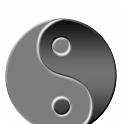 Exhibitors often spend hundreds of thousands of dollars for the opportunity to meet face-to-face with prospects over the course of a few days. Websites, on the other hand, are the 365 days-a-year, 24/7 workhorses of marketing. Instead of looking at these two marketing strategies as competing, marketers and content writers should consider the power of yin and yang. Together, websites and trade shows can work together to enhance both online and offline sales and interaction. There is no substitute for face-to-face interaction, but trade show marketing needs to extend before and after the show. Websites can not only drive more potential buyers to your exhibit, they can also provide convenient after-the-show support at a time convenient to the buyer. At the same time, trade shows offer marketers an excellent source of content that can be used to enhance a potential customer’s online experience.
Exhibitors often spend hundreds of thousands of dollars for the opportunity to meet face-to-face with prospects over the course of a few days. Websites, on the other hand, are the 365 days-a-year, 24/7 workhorses of marketing. Instead of looking at these two marketing strategies as competing, marketers and content writers should consider the power of yin and yang. Together, websites and trade shows can work together to enhance both online and offline sales and interaction. There is no substitute for face-to-face interaction, but trade show marketing needs to extend before and after the show. Websites can not only drive more potential buyers to your exhibit, they can also provide convenient after-the-show support at a time convenient to the buyer. At the same time, trade shows offer marketers an excellent source of content that can be used to enhance a potential customer’s online experience.
Tradeshow yin
Use trade shows to generate content for the website. Capture customer interviews or record videos with product experts. Video product demonstrations and get reactions from interested trade show attendees. After face-to-face meetings connect with prospects through social media channels. Ask questions and notice how attendees respond to your messages. Learn what their sales objections are. Take note of pain points to generate new ideas for content.
Website yang
Before the show use your website to let buyers know where and when you will be exhibiting and what you will have on display. Build suspense for new product introductions. At the show, use QR codes to help buyers access relevant information right from their smart phones. Recognize that prospects don’t want to carry around your literature or ship it home in a suit case. They want to access everything online, in their own language. Make sure your website is up-to-date with the latest information from the show. Nothing is more frustrating for a buyer or journalist than knowing there is something new but being unable to find information on it. Yet it happens all the time when trade show planners, pr professionals and online marketers work in different silos. It’s a missed opportunity. Once you capture their attention at the show, a website should pull buyers through the sales cycle, providing content that will help buyers make informed decisions. 1) Comparisons with competitive products 2) Comparisons with other products in your line 3) Case studies 4) Frequently asked questions 5) Technical support 6) Where they can buy 7) When it will be available 8) How much it will cost 9) Warranty or guarantee
Follow-up is essential
Email marketing can bridge the gap from the trade show to your website. Instead of just capturing email addresses, keep track of what products or services trade show visitors are interested in, and send relevant messages geared to their interests. Let prospects know you were listening. Trade shows are a huge investment for many companies. Take a yin and yang approach to get the most from both your trade shows and your website. Do they work together at your company? What are the challenges?
